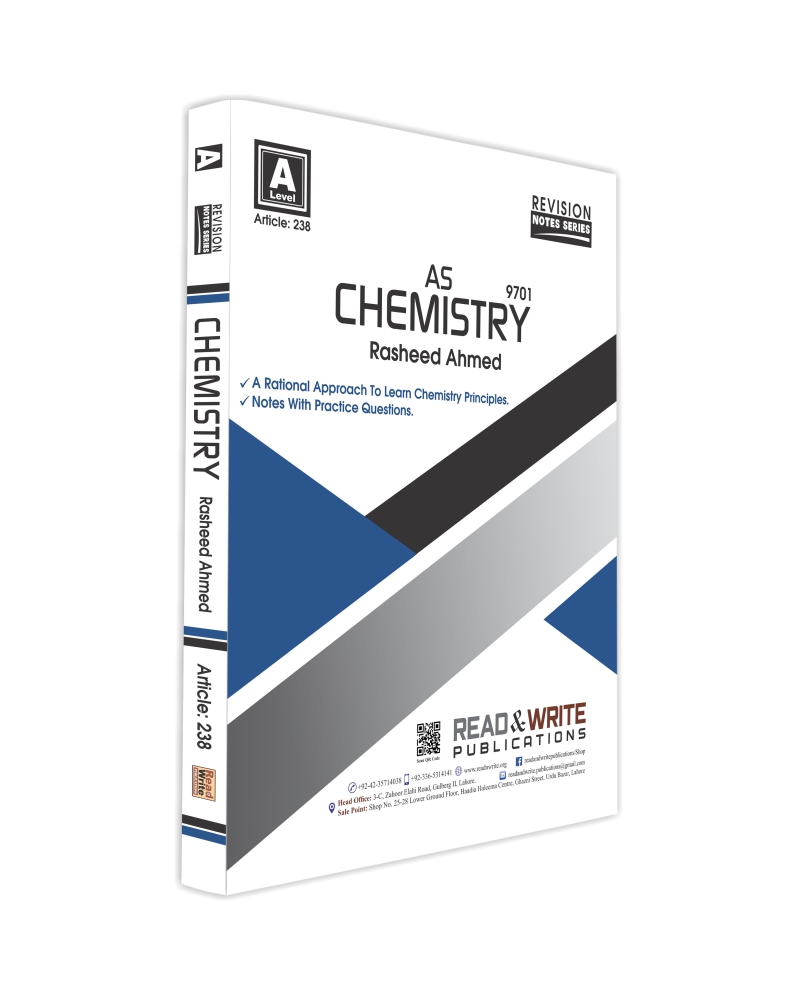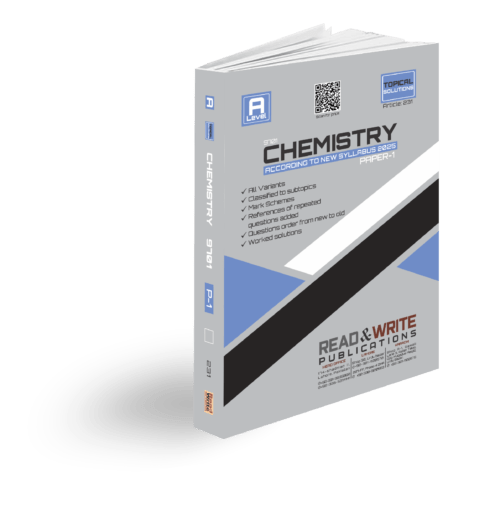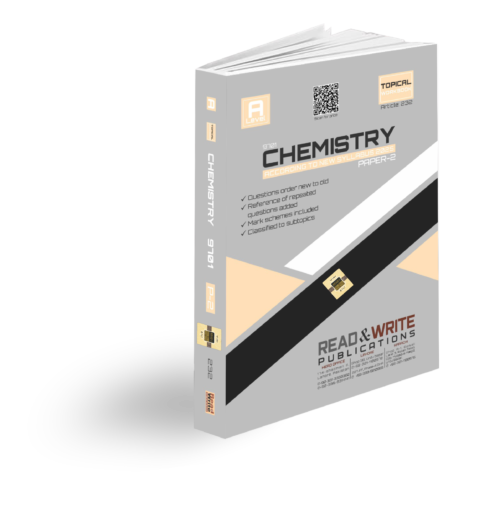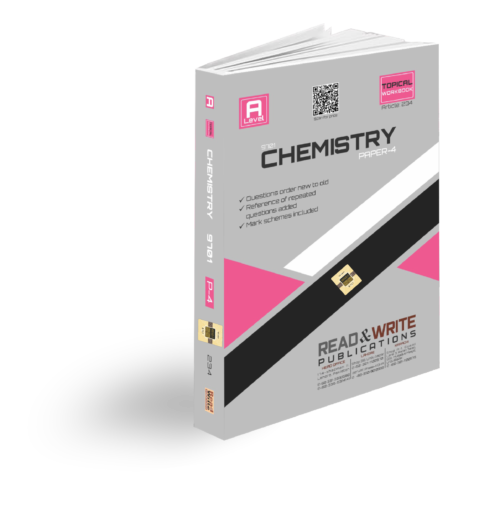| Book Code : | 238 |
|---|---|
| Subject Code : | 9701 |
| Author : | Rasheed Ahmed |
| Language : | English |
| Publishers : | Read and Write Publications |
Description
Chemistry As Level Revision Notes
TABLE OF CONTENTS
Unit-1: Atoms, Molecules and Stoichiometry
1.1: Relative Atomic Mass:
1.2: Calculations of Empirical/Molecular Formula:
1.3: Chemical Equations:
1.4: End of Chapter Past Paper Questions
Unit-2: Atomic Structure
2.1: Atom
2.2: Electronic Configuration
2.3: Ionisation Energy: HOIE
2: End of Chapter Past Paper Questions
Chemistry As Level Revision Notes
Unit-3: Chemical Bonding
3.1: Ionic or Electrovalent Bond:
3.2: Covalent Bonding:
3.3: Coordinate or Dative Covalent Bonding:
3.4: Valence Shell Electron Pair Repulsion Theory
3.5: Orbital Hybridization
3.6: Metallic Bond:
3.7: Inter Molecular Forces of Attractions:
3.8: End of chapter past paper questions
Unit-4: States of Matter
4.1: Kinetic Molecular Theory (KMT) of Gases
4.2: Kinetic Molecular Model of Liquids
4.3: Solids
4.4: Macromolecules (Giant Covalent Structure):
4.5: Carbon Nanoparticles:
4.6: Metallic Lattices:
4.7: End of chapter past paper questions
Unit-5: Chemical Energetics
5.1: Standard Conditions for Standard Enthalpy Changes
5.2: Measuring Enthalpy Change of the Reactions
5.3: Hess’s law
5.4: Activation Energy (Ea)
5.5: End of chapter past paper questions:
Unit-6: Electrochemistry
6.1: End of chapter past paper questions
Unit-7: Equilibria
7.1: Irreversible and Reversible reactions
7.2: Le-Chatlier’s Principle
7.3: Equilibrium Constant Kc
7.4: Haber’s Process of Ammonia Formation
7.5: Contact Process of Sulphuric Acid Formation
7.6: Bronsted – Lowery Theory of Acids and Bases:
7.7: End of chapter past paper questions
Unit-8: Reaction Kinetics
8.1: Rate of Reaction
8.2: Boltzmann Distribution Curve and Effect of Temperature on Reaction Rate
8.3: Catalysis
8.4: Enzymes – Biological Catalyst:
8.5: End of chapter past paper questions
Unit-9: The Periodic Table: Chemical Periodicity
9.1: Periodicity of Physical Properties of Third Period Elements
9.2: Periodicity of Chemical Properties of Third Period Elements
9.3: Reaction of Sodium and Magnesium with Water
9.4: End of chapter past paper questions
Unit-10: Group 2
10.1: General Characteristic Properties of Group II Elements
10.2: Behavior of Group II Elements Oxides, Hydroxides and Carbonates
10.3: Solubility of Group II Metal Sulphates
10.4: End of chapter past paper questions
Unit-11: Group 17
11.1: General Characteristics
11.2: Reaction of Metal Halide with Conc
11.3: Disproportion Reaction
Unit-12: Nitrogen & Sulphur
12.1: Industrial Importance of Ammonia & Its Compounds
12.2: Pollution
12.3: Oxides of Nitrogen – Air Pollution
Unit-13: An Introduction to Organic Chemistry
13.1: Classification of Organic Compounds (Structural)
13.2: Types of Chemical Formulae
13.3: IUPAC Rules of Nomenclature (Assign Name to Organic Substances)
13.4: Characteristic Organic Reactions
13.5: Isomers
Unit-14: Hydrocarbons
14.1: Alkanes
14.2: Free Radical Substitution Reaction: (characteristic of alkanes-unsaturated)
14.3: Alkenes
14.4: Addition Reactions
14.5: Oxidation of Alkenes
14.6: Polymerization
14.7: Problems to Dispose of Plastic Wastes
14.8: Fractional Distillation of Crude Oil
14.9: Cracking of Alkanes
Unit-15: Halogen Derivatives
15.1: Physical Properties
15.2: Reactions of Halogenoalkanes
15.3: Uses of Halogenoalkanes
Unit-16: Hydroxy Compounds
16.1: Physical Properties of Alcohols
16.2: Manufacture of Ethanol
16.3: Reactions of Alkanols
16.4: Distinction between primary, secondary and tertiary alcohols
16.5: Tri – Iodo Methane Test
Unit-17: Carbonyl Compounds
17.1: Preparation of Carbonyl Compounds
17.2: Nucleophilic Addition of Hydrogen Cyanide
17.3: Test For Carbonyl Compounds
Unit-18: Carboxylic Acids & Derivatives
18.1: Formation of Carboxylic Acids
18.2: Reactions of Carboxylic Acids
18.3: Formation of Esters
18.4: Commercial Uses of Esters
18.5: Infra-red Spectroscopy
You must be logged in to post a review.






Reviews
There are no reviews yet.